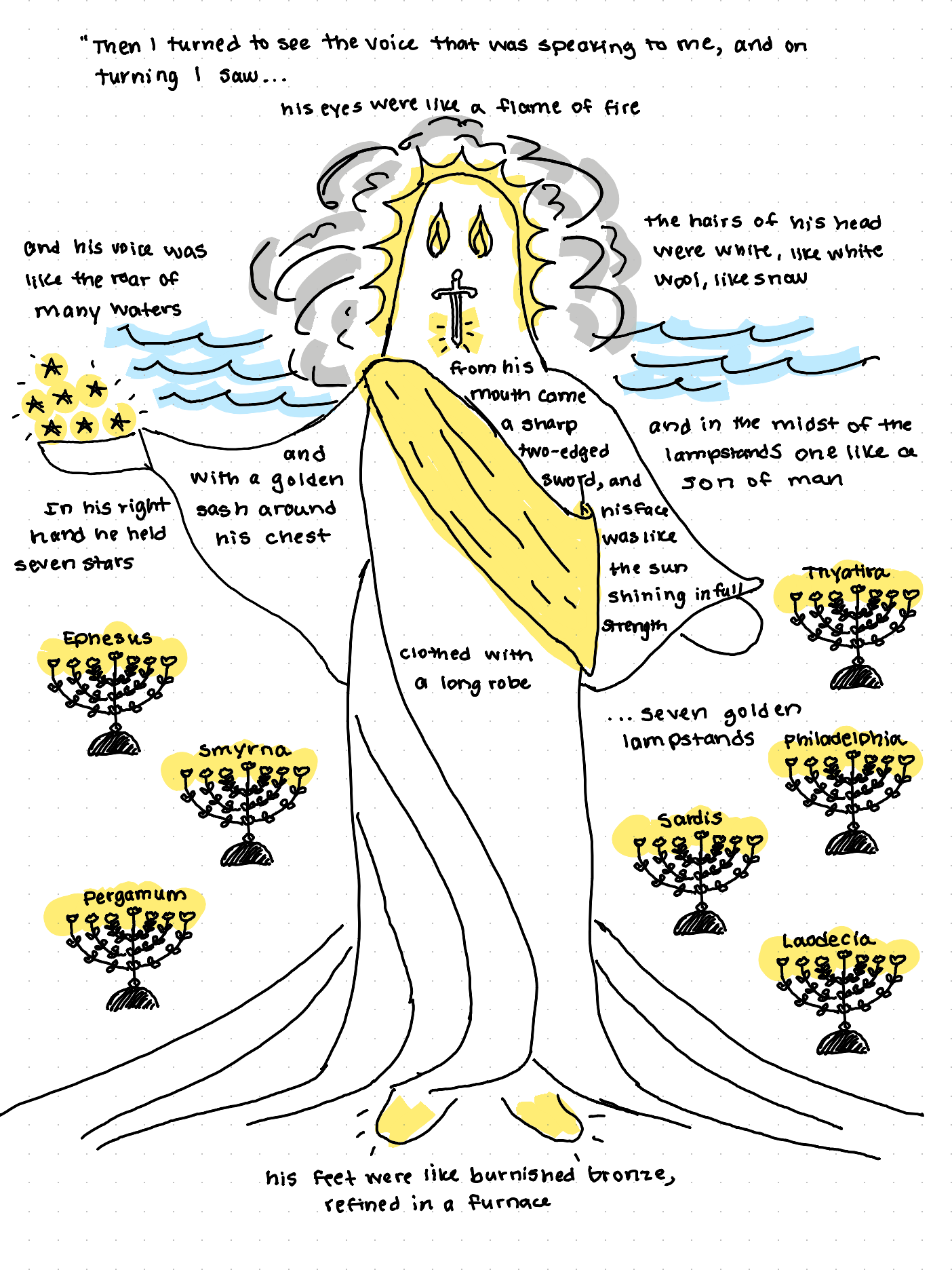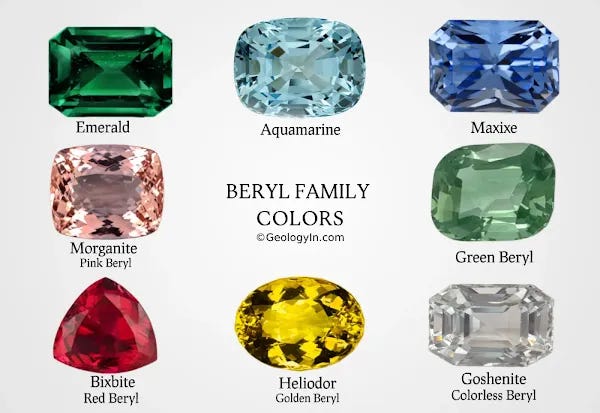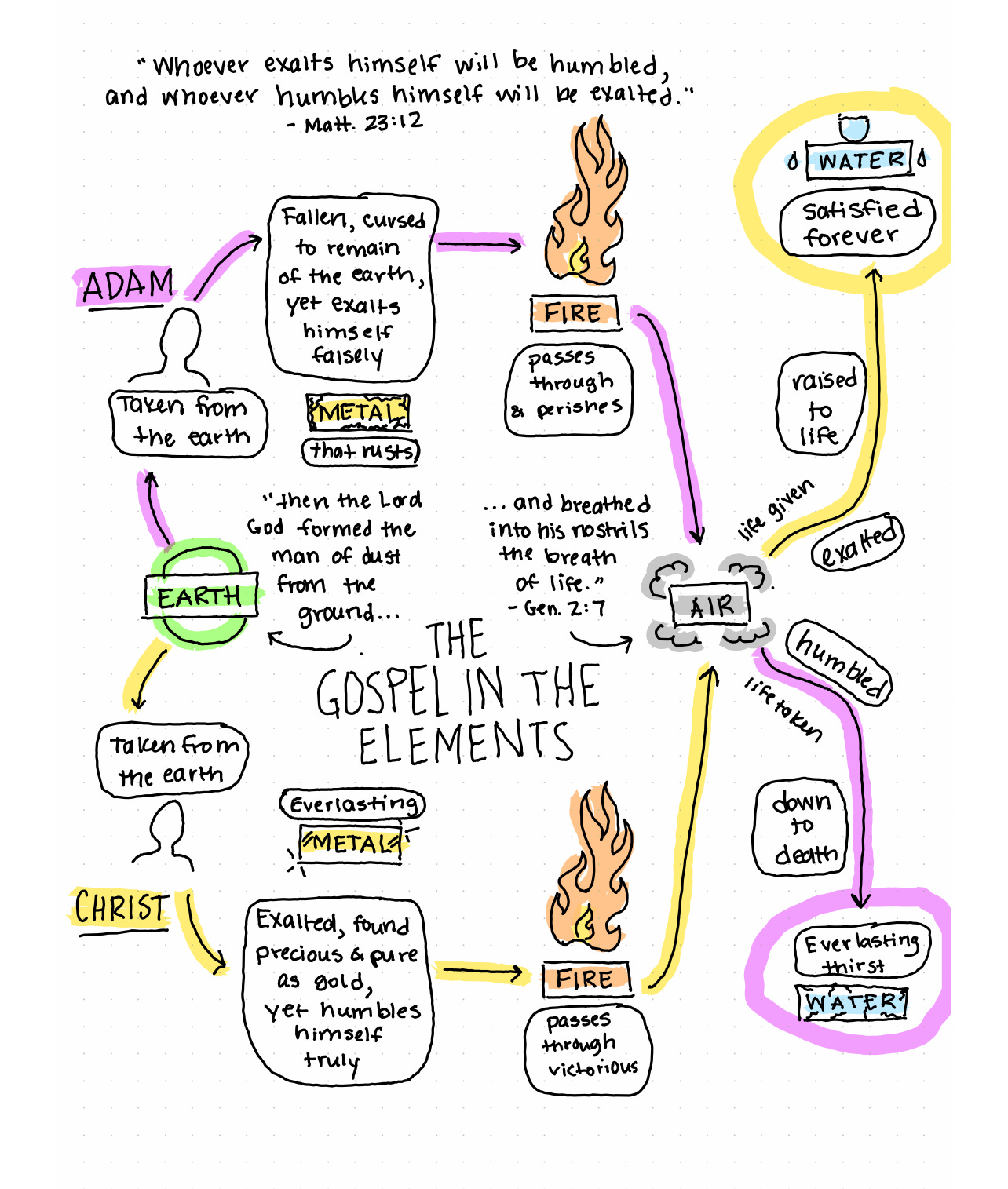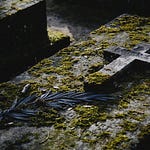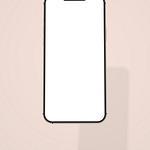“In the beginning God created the heavens and the earth. Now the earth was formless and void, and darkness was over the surface of the deep. And the Spirit of God was hovering over the surface of the waters. And God said, ‘Let there be light,’ and there was light.” - Genesis 1:1-3
Why did God begin with light?
It’s been attributed to Aristotle for coining the phrase: “the whole is greater than the sum of its parts,” which means that, when combined, the individual elements of something, say a car or the human body, find a greater expression of power than if they were interpreted separately. (He never actually said this exact phrase, but his writings on metaphysics conceptualized it.)
This is true. It’s the way the world works. It even applies to the book of Revelation. And it’s ironic that Aristotle, a man not given to traditional religion let alone the God of the Bible, so eloquently summarized our metaphysical reality. He was a Greek philosopher, no doubt one of the most enlightened men of the ages. Yet his judgments on the natural world and the spiritual realm, as enlightened as they were, lacked a most critical element.
The Son of Man Envisioned
“Then I turned to see the voice that was speaking with me. And having turned, I saw seven golden lampstands, and among the lampstands was One like the Son of Man, dressed in a long robe, with a golden sash around His chest. The hair of His head was white like wool, as white as snow, and His eyes were like a blazing fire. His feet were like polished bronze refined in a furnace, and His voice was like the roar of many waters. He held in His right hand seven stars, and a sharp double-edged sword came from His mouth. His face was like the sun shining at its brightest.” - Revelation 1:12-16
This vision of the Son of Man consists of a list of elements metaphorically used to communicate one main characteristic. As Aristotle observed, each metaphor expresses an important aspect, but when taken as a whole, we see the point is magnified. And the point is: Christ is the rightful and righteous judge of the universe.
Now, I have read commentaries that advise we don’t try to separate the elements of this passage. Just stand back and admire the picture as a whole. But when it comes to theology, I share the same view as my sons when they stand back and look at an old lawn mower: I want to take it apart and see how it works. So, we’re going to separate this picture into its pieces so we can see how the sum of these parts synergistically animate the whole.
The Shared Characteristics of Father & Son
Flipping back to Daniel 7, we read:
“As I looked, thrones were placed, and the Ancient of Days took his seat; his clothing was white as snow, and the hair of his head like pure wool; his throne was fiery flames; its wheels were burning fire. A stream of fire issued and came out from before him; a thousand thousands served him, and ten thousand times ten thousand stood before him; the court sat in judgment, and the books were opened…I saw in the night visions, and behold, with the clouds of heaven there came one like a son of man, and he came to the Ancient of Days and was presented before him. And to him was given dominion and glory and a kingdom, that all peoples, nations, and languages should serve him; his dominion is an everlasting dominion, which shall not pass away, and his kingdom one that shall not be destroyed.”
- Daniel 7:9-10, 13-14
But what do you notice about this description, compared to the Revelation passage? In Daniel, the Ancient of Days (Yahweh, the Father) is the one who is described as having the white clothing, hair of wool, and a throne of fiery flames, depicting his holiness, his wisdom, and his authority to judge the earth. It is before him the one like a son of man appears.
But in Revelation it is that Son of Man who appears to John in a white robe, hair of whitest wool and with eyes of fire. This adds to our case for the trinity (see part 4), for the same description used to describe the Father is applied to the Son. Though the they are distinct, they are one.
The Particular Characteristics of the Son of Man
But in John’s vision more elements are applied to describe the unique position of the Son of Man. Daniel 7 more specifically communicates the purity and power of God in the person of the Father enthroned in heaven; a few chapters later, Daniel 10:5-6 communicates more specifically the work of God in the person of the Son on earth:
“I lifted up my eyes and looked, and behold, a man clothed in linen, with a belt of fine gold from Uphaz around his waist. His body was like beryl, his face like the appearance of lightning, his eyes like flaming torches, his arms and legs like the gleam of burnished bronze, and the sound of his words like the sound of a multitude.” - Daniel 10:5-6
The Elements of the Earth
The Golden Sash of Victory
The golden sash or belt emphasizes his purity—particularly that he achieved it as a man and not only as a divine being. This is expressed in a doctrine known as the “hypostatic union.”1 Christ had both a divine and human nature, making him the one and only “God-man.” Had he not been God, his perfect life, sacrifice, and resurrection would not have been attainable, for God is the only one who is able; had he not been man, his perfect life, sacrifice, and resurrection would not have been applicable, for only a man can pay the penalty of sin. For this reason the sacrifice had to be take from the earth—from among us. Because of his victory as the Son of Man, he has been given the same authority to judge as the one who sits on the throne.
The Precious Stones from the Earth
Beryl is a broad term for gemstones. In scripture beryl tends to be on the blue/green side of the spectrum, though a rainbow of colors are represented in the beryl family. These are the precious stones created by pressure and extracted from the earth and polished until their beauty can be fully displayed. In the same way, Jesus body was taken from the earth, tested and found to be precious. Daniel’s vision of beryl was a vision of Christ’s body raised incorruptible.
John’s vision of the feet of bronze shares similar connotations, combining both the refinement of fire that gold undergoes and the polishing to perfection that gemstones undergo. The point is that precious metals and gemstones hold up through pressure, fire, refinement and polishing and are revealed to be beautiful—a glorious picture of the Son of Man.
The Element of Fire
Peter writes in this vein:
“In this you rejoice, though now for a little while, if necessary, you have been grieved by various trials, so that the tested genuineness of your faith—more precious than gold that perishes though it is tested by fire—may be found to result in praise and glory and honor at the revelation of Jesus Christ.” - 1 Peter 1:6-7
The church is taken from the earth and tested in the same manner that Adam and Christ were. Though Adam failed and brought a curse on humanity, Christ succeeded and we reap the benefits of his victory—provided that we suffer with him (Rom. 8:17).
This passing through the fire is what gives the Son of Man his authority to judge. While the Father sits on a throne of fire, implying that he is the source of all judgment, the Son has eyes a flame of fire, showing that he has the same authority to judge. But what is the correlation between the fire and the eyes? This is Revelation’s way of saying he is the image of the invisible God (Col. 1:15).
Eyes Fit to Judge
In Luke 11:33-36, Jesus speaks about the eye in a parable:
“No one after lighting a lamp puts it in a cellar or under a basket, but on a stand, so that those who enter may see the light. Your eye is the lamp of your body. When your eye is healthy, your whole body is full of light, but when it is bad, your body is full of darkness. Therefore be careful lest the light in you be darkness. If then your whole body is full of light, having no part dark, it will be wholly bright, as when a lamp with its rays gives you light.”
If the eye is the lamp of the body, Christ shows us with the image of the fire that his eye is fully lit, meaning he has good judgment. Jesus’ parable of the eye and the lamp teaches that if your eye and your body are full of the word of God, then you are able to judge rightly. But if your eye is bad and you are blind, then you cannot properly judge. Christ embodies perfect judgment and his fiery eyes search the whole earth and the hearts of men (Rom. 8:27, Jer. 17:10, Jer. 20:12, Psa. 7:9, Rev. 2:23).
So Christ was drawn from the earth and refined as precious metals in the fire. And none of that is to say that he ever had impurities in the first place. It only speaks metaphorically to his humanity and identification with us. Jesus was God walking on earth as a man. Man comes from the dirt. But men who are transfigured into the kingdom of heaven are precious metals. Christ was both of the earth and of the heavens at the same time. And such is the man who is in Christ. He is declared refined, precious and pure in heaven even while he is still practically being refined here on the earth. (Justification vs. sanctification.)
The Element of Air
Eastern and Western philosophy associated the air element with the breath of life, freedom, and the intellect. The ability to breathe is what animates. When God made man, he animated him by giving him breath. And at death, that breath is taken up again.
Out of Christ’s mouth comes a double-edged sword dividing into two categories: those given the breath of life and those from whom it is taken; those who will ascend to meet him in the air, and those who will be brought low.
The Elements in the Air
Both the sun and the lightning are features of the heavens and convey power. Having just spoken of fire, it’s no coincidence that these two heavenly sources of light share properties with fire. The sun is said to be made of fire (like Yahweh enthroned on flames?) and the lightning can cause fire at its strike. Both of these are too bright to look at without blinding its onlookers. The face of Christ, parallel to Yahweh’s description of himself, shines like the sun or a bolt of lightning—so bright you can’t look at it.
You may recall Yahweh telling Moses in Exodus 33: “you cannot see my face, for man shall not see me and live” before hiding him in the cleft of a rock and passing by so that Moses could only see his back. (See A Commentary on Isaiah 2, Pt. II for a more extensive commentary on this.) And in the Old Testament the prophets often invoked these elements to express the coming judgment of Yahweh. If you were among the wicked, you did not want to see the God of Israel coming like lightning or shining like the sun in full strength. (We’ll see later in Revelation what happens in both of those instances.)
But if you were numbered among God’s people, the light of his face was something that you prayed for. In fact, it was the common blessing prayed among the Israelites, ironically beginning with Moses, who we just said could not look upon God’s face:
“The Lord spoke to Moses, saying, ‘Speak to Aaron and his sons, saying, Thus you shall bless the people of Israel: you shall say to them,
The Lord bless you and keep you;
the Lord make his face to shine upon you and be gracious to you;
the Lord lift up his countenance upon you and give you peace.”
-Numbers 6:22-26
The Element of Water
Finally, we come to the element of water, which should be familiar to you if you read part 7. In fact, if you haven’t, I would strongly encourage you to go back and read it and contemplate in depth what it means when John says that Christ’s voice “was like the roar of many waters.”
Let There Be Light
As we’ve gone through the vision of Christ in Revelation 1, I’ve organized the parts of the vision into what is considered the classic list of elements. That’s because this is the way the world was interpreted around the time of Christ. This may have triggered you into thinking about Buddhism, new age religion, Avatar: The Last Air Bender, or something like that.
The Greek philosophers were the first to name the four classic elements: earth, water, fire and air. Since then, western thinking has upgraded its view of the world with things like the periodic table of elements instead. But more and more, the lack of mystical experience in western culture has left people thirsty for meaning beyond the rational. In recent decades westerner s are returning to eastern modes of interpreting the world in search of a different kind of enlightenment.
False Enlightenment: The Light Within
The default religion of all mankind is to look at himself and to either consciously or unconsciously, either individually or collectively, put himself on the throne as God. Even Aristotle who was a western thinker, considered rational, anti-mystical, and irreligious. But whether you count four or five elements, whether you come from western or eastern thought, the end goal of identifying and studying the earth’s elements apart from the revelation of scripture remains the same:
“Knowledge of the five elements allows the yogi to understand the laws of nature and to use yoga to attain greater health, power, knowledge, wisdom and happiness. This arises out of deep intuition of how the universe operates.”2
Man becomes like Narcissus—a mythological character from, again, Greek philosophy—who, upon looking at his own reflection, fell in love with himself and died of pure vanity. No matter where you look, that is the end result of man’s efforts without God.
“Therefore God sends them a strong delusion, so that they may believe what is false, in order that all may be condemned who did not believe the truth but had pleasure in unrighteousness.” - 2 Thessalonians 2:11-12
The lie we believe is that we are… well, I like the way Kesha put it:
“I'm nothing more than recycled stardust and borrowed energy,
born from a rock, spinning in the aether.”
This is the thinking of the “enlightened.” Whether you’re a pop star living in 2025 or a pagan philosopher from 300 BC. It’s a false humility that confesses “I’m insignificant” with the mouth while believing with the mind that you’re divine because you are an extension of the energy that animates the universe. Judgment, suffering, balance begins and ends with you. You must only ascend, become more conscious of the light within.
True Enlightenment: The Light From Somewhere Else
God began everything with light. Why? After creating light, speaking in human terms, God was able to “see.”
What do we do when we see things? We make judgments. And we make judgments so that we know how to proceed. And that’s exactly what God did for the next 6 days. Each day he created, each day he made a judgment: “God saw that it was good.” Without the light, no judgments can be made, for nothing can be seen in the darkness. Seeing has everything to do with judgment.
The reason God first created light was to teach us something about judgment, about what it means to see. It was not so that he could see to judge, but to teach us that, without the light, we cannot see to judge. We’re here on the earth made of these elemental things, interacting with them. We’re only able to see and make judgments about them because of the light—the literal light. Human wisdom would say spiritual light comes from within; God’s wisdom says it must come from somewhere else. Without this force of light and energy, we are merely formless matter left in darkness:
“Now the earth was formless and void, and darkness was over the surface of the deep.” - Gen. 1:2
This is us without God. Locked in a body of formless matter trying to make judgments about patterns, elements, and the things we see with our eyes yet are blind to in our hearts. We try to form our own sources of light, striking matches that temporarily illuminate and then dissipate. Our field of view never expands beyond ourselves. And we wonder what the world means in relation to us. We make judgments like:
What is the meaning of life? I’m sure there’s a god, but where is he? There’s so much suffering. It seems so meaningless. What did the wisest people of the past say about the meaning of life? Light comes from within… consciousness. Ending suffering starts with… me. I need to become more aware of my thoughts, my feelings. Who am I? What do I want? If I can figure that out, I can end my own suffering, then I can help stop others’ suffering. But how do I do that?
What’s my star sign? Maybe… maybe I need to meditate to find myself… raise my consciousness. It seems like that’s what all the wisest teachers have done. What did Jesus do? He was a good teacher. He prayed. Prayer… meditation… I can do that. Just be still. Breathe… notice things.
What things? Focus on the breath. Notice how I’m feeling in my body. Warm… I’m always sweating. I have a bad temper… Aires, it said my element is fire. I need balance. More compassion. More gratitude. I can do better… I just need more practice.
No! The light in you is darkness. The light must come from somewhere else! God says in the heart of a man “Let there be light!” and so it is. The darkness parts, the field of view expands beyond yourself and you can see. For the first time you can judge yourself rightly! And it is. not. good.
What a fool you were to think that creation reflected you and that precious gold would be unearthed in you!
Suddenly The Judge of the earth wields a sword over you holding the air that you breathe in his hands, eyes filled with fire, a body that looks like yours but is made of something much more precious, and who opens his mouth to speak and terrifies you like a torrent of water rushing in to drown you as you realize you are made of dirt and to it you shall return. No life, no meaning, only formless elements. No light.
Unless you turn. You turn and you say, it is not good. I am not good. And no amount of self-discovery, no amount of gratitude, no amount of balance or consciousness about who I am will fix it.
Let there be light. And you can see. You can judge rightly.
“And this is the judgment: the light has come into the world, and people loved the darkness rather than the light because their works were evil…”
It’s evil to see yourself reflected in creation—as though it told the story of your glory. “your eyes will be opened, and you will be like God, knowing good and evil” (Gen. 3:5b). How glorious you will be if you just become conscious, more aware of yourself and the things of the earth!
“…For everyone who does wicked things hates the light and does not come to the light, lest his works should be exposed. But whoever does what is true comes to the light, so that it may be clearly seen that his works have been carried out in God.” - John 3:19-21
And God Saw That It Was Good
“The whole is greater than the sum of its parts.” Aristotle was on to something.
Without the light of God, the earth is just the sum of its parts. Earth, fire, air, water. But into the void of the formless elements God speaks: “Let there be light!” He sees and judges: it is good. With one spark, the parts become a greater whole that grows and produces and teems with life.
Apart from the grace of God, you are just the sum of your parts. And that’s all you’ll ever be—unless lay down your gavel and turn to the only who who earned the right to be called Judge. The God who sees the void of your formless heart and speaks: “Let there be light!” And so it is. And it is good.
If you’d like to support my work, you can leave a tip by clicking the button above!
https://www.gotquestions.org/hypostatic-union.html
https://www.yogajournal.com/lifestyle/purifying-the-five-elements-of-our-being/




